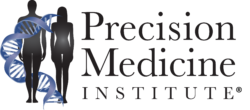After a multimillion-dollar investment of public funding for early implementation of rapid whole genome sequencing (rWGS), those at the forefront have released updates on their advancements in pediatric precision medicine
Rapid whole genome sequencing (rWGS) has been a target for Medicaid funding, medical policy, and legislation for several years now. Doctors and medical laboratory leaders following pilot projects and statewide initiatives, such as Project Baby Bear in California and Project Baby Deer in Michigan, may already be somewhat familiar with rWGS testing and analysis, but its usefulness continues to unfold.
rWGS is intended to rapidly diagnose and limit the number of unnecessary procedures performed on beneficiaries, from hospitalized newborns to children up to 18 years of age that meet certain clinical criteria. Precision Medicine Institute has followed early-implementation genomic centers based at children’s hospitals around the US. Those at the forefront recently shared status updates.
In our first example, Rady Children’s Institute for Genomic Medicine (RCIGM) recently announced the development of an automated, virtual disease management system. This system is still a prototype but uses rWGS to provide clinicians with a diagnosis in less than 14 hours after performing a genetic test. The development of this new system is part of a broader trend in precision medicine of supporting new pediatric precision medicine applications using advanced computational programs.
An Automated Disease Management System

Called Genome-to-Treatment, or GTRx, this disease management system automates the process of diagnosing rare genetic diseases from rWGS testing. GTRx includes a laboratory information system (LIS) and analysis pipeline and is designed to diagnose 500 different rare genetic conditions that rapidly cause progressive health issues but that can be effectively treated if recognized.
“GTRx is intended to provide immediate guidance to frontline neonatologists and intensivists to select optimal therapies for critically ill infants and children in intensive care units as time is of the essence,” said Stephen Kingsmore, MD, DSc, in an RCIGM press release. “This study continues to validate the clinical utility of rWGS and how Rapid Precision Medicine can improve outcomes for those diagnosed with a rare disease.” Kingsmore is the President and CEO of RCIGM and the principal investigator of a study outlining the performance of GTRx that was recently published in Nature Communications.
While announcing the new research into the effectiveness of GTRx, RCIGM noted that rare diseases in children typically take about five years to diagnose. GTRx provides results in as little as 13.5 hours, helping clinicians to treat rare genetic diseases before they advance and cause irreversible health effects.
Rady Children’s Hospital has been at the forefront of precision medicine research for children, using rWGS to help guide treatment and improve outcomes.
In mid-2021, the Precision Medicine Institute released a story outlining how Rady Children’s Hospital used ‘ultra-ultra’ rWGS to recognize a rare genetic brain disease within 14 hours. In this case, serious brain damage was avoided because of a simple, inexpensive treatment that would not have been provided without genetic testing.
Through the development of GTRx, it is hoped that the availability of precision medicine diagnoses and treatments will expand beyond specialized research institutions. “We developed GTRx to both increase the number of children who receive optimal, immediate treatment and to facilitate broader use of rWGS by physicians working in local hospitals who may not be as familiar with genetic diseases as sub- and super-specialists in regional, academic, tertiary or quaternary centers,” explained Kingsmore. “Our goal is to upskill these physicians by providing patient diagnosis- and disease-specific information in real time.”
Precision medicine for children is an area of growing interest, with a growing number of initiatives that are focused on pediatric patients.
CHOP Update
Another recent pediatric precision medicine technology update comes from the Children’s Hospital of Philadelphia (CHOP) in collaboration with the National Cancer Institute (NCI). CHOP researchers have created the Molecular Targets Platform, a computational bioinformatics program that blends data on childhood cancers from six major sources.
The Molecular Targets Platform, currently publicly available through the NCI, is designed to provide a unified source of information on pediatric cancer biological markers, genes, and pathways that can be easily queried by researchers. The program allows researchers to quickly compare different pediatric cancer biomarkers and to better understand their clinical relevance.
The Molecular Targets Platform was developed in response to the RACE for Children Act, which requires pharmaceutical companies developing targeted cancer drugs for adults to also develop the drug for childhood diseases with the same molecular marker. The RACE for Children Act was passed in 2017 but was enacted in 2020. This law is one of the drivers of the broader trend in precision medicine of increasing the availability of personalized treatments for pediatric patients.
rWGS Closer to Standard of Care, Moving Beyond Research Only?
While there is increased attention to enabling new precision medicine treatments for children, many of these advances are still in a very early stage. The GTRx, for example, is still being validated for actual clinical use. “Currently, GTRx is available for research purposes,” said Kingsmore. “Upon validation of clinical utility, we will expand the system to additional genetic diseases and clinical use, as well as incorporating ongoing, expert, open community-based review.”
In planning ahead, forward-looking medical and laboratory leaders of all birthing and children’s hospitals may find it helpful to review the paper “Healthcare Professionals’ Attitudes toward Rapid Whole Genome Sequencing in Pediatric Acute Care.” This paper features survey data and input from those involved in early-stage implementation of rapid whole genome sequencing as a first-tier diagnostic in pediatric acute and critical care practice, including Rady Children’s Institute for Genomic Medicine, University of California San Francisco, Western Michigan University Homer Stryker M.D. School of Medicine, Bronson Children’s Hospital, and Spectrum Health Helen DeVos Children’s Hospital.
Several points are made in the survey paper that will be of interest. Among them is the need for a clinical champion, as well as engagement with neonatologists, pediatric intensivists, pediatric hospitalists, subspecialists, fellows, residents, nurse practitioners, physician assistants, division chiefs/medical directors, geneticists, genetic counselors, nurse managers, nurses, social workers, laboratory directors, laboratory staff, and hospital administrators.
“Our previous study [2021] of rWGS implementation identified five key implementation themes: the importance of rWGS champions, educational needs and strategies, negotiating decision-making roles, workflows, and perceptions about rWGS,” the authors wrote. “In our current study [2022], each site had a designated clinical champion. Consistent with our previous findings, the site clinical champion was most often a physician provider and was perceived to be equally effective in the role whether from genetics, neonatology, intensivist, hospitalists or other specialty.”
As always with any new technology, a key element in rWGS planning will be payer coverage policies which will vary and change as more evidence accumulates. Those responsible for revenue cycle management will want to monitor new and recently amended state and federal legislative actions related to rapid whole genome sequencing. They include:
- SB 154 in Louisiana which expands health insurance coverage of biomarker testing for infants born in a medically fragile condition and in the NICU;
- HF 3632 in Minnesota which, according to the text, amends Minnesota Statutes 2020, section 256B.0625, with a list of stipulations related to separate payment methodology and reimbursements for hospitals for the cost associated with rWGS testing; and the
- RACE for Children Act in Congress.
Most importantly, as evidenced by the Michigan Medical Services Administration’s policy on covered and non-covered rWGS for critically-ill infants there will be numerous catches that could put reimbursement at risk with these services.
Healthcare leaders should be aware of how trends in precision medicine for children, driven by increased legislative attention to this need, are likely to impact pediatric practice. As new tools become available, pediatric providers will be able to recognize and treat genetic diseases earlier, improving outcomes for their young patients.
—Caleb Williams
Related Information:
Rapid Whole Genome Sequencing Explored in Project Baby Deer Case Review
Rapid Sequencing-Based Diagnosis of Thiamine Metabolism Dysfunction Syndrome
Healthcare Professionals’ Attitudes Toward Rapid Whole Genome Sequencing in Pediatric Acute Care
Rapid Genetic Sequencing Saves the Life of an Infant With a Rare Fatal Brain Disease
CHOP Helps Develop Platform to Speed Up Drug Development for Kids with Cancer
